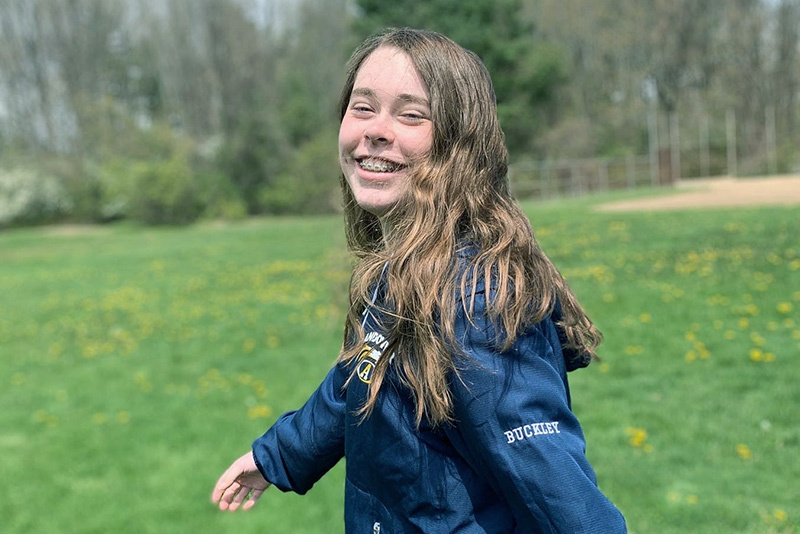Surgery for Chiari malformation: “I was just happy to have an answer”

Abby Buckley loves being active, whether that means hiking, cycling, or playing sports like javelin, shotput, and discus. But in eighth grade, a bad concussion sidelined her — and led to an unexpected diagnosis.
A magnetic resonance imaging (MRI) scan showed that she didn’t just have a concussion. She also had a Chiari malformation, a type of abnormality in the back of the head where the brain and spinal cord meet. This can cause pressure on the brain and block the normal flow of spinal fluid in and around the brain. Because the malformation didn’t seem to be causing symptoms, Abby’s clinicians believed it was simply an incidental finding and weren’t concerned about it.

Coping with chronic pain
But the truth was that Abby had been experiencing symptoms from the Chiari malformation for years — she just didn’t realize it. “My arms and legs tingled a lot, and if I moved my head a certain way, I got a headache and had a lot of pressure in my neck and head,” she remembers. “I didn’t know anything different, so I just thought it was normal.”
Abby returned to sports once her concussion healed, but soon got hit in the head again. “That’s when things really started to go downhill,” she says. Dr. Mark Proctor referred her to the Pain Treatment Center at Boston Children’s Hospital. Since then, she has seen Dr. Susan Sager and pediatric nurse practitioner Christine Shusterman, who have taught her strategies to cope with the chronic pain without relying on medication. “They’ve been phenomenal,” she says.
After another head injury earlier this year, however, Abby was ready to take the next step. “My dizziness, pain, fatigue, and other symptoms from the Chiari malformation had gotten so bad that I stopped doing things I love, like hiking and biking, and school became really difficult,” she says. “My quality of life was really poor. I decided it was time to think about surgery.”

Taking the next step
Abby had mixed feelings about surgery. “It was a relief, but having brain surgery was a lot to wrap my head around.” The procedure, performed by Dr. Proctor, Boston Children’s neurosurgeon-in-chief, was a success, although Abby found her recovery challenging. All told, she missed five weeks of school. “It was painful, and I couldn’t move my head or neck at first,” she explains. Still, she says, “I was just happy to have an answer.”
Today, Abby, now 17, is enjoying hanging out with her friends, playing with her dogs, acting as a nanny for a local family, and digging in the dirt as part of her three-month gardening internship. The recovery has been very challenging, but she’s looking forward to returning to sports when she’s able. And she has a new interest: “If there’s a positive thing to come out of this,” she says, “it’s that now I want to study neuroscience in college.”
Learn more about the Department of Neurosurgery and make an appointment.
Related Posts :
-

What it’s like to have brain surgery: Peyton’s story
During the summer before my junior year of high school, I started getting a lot of dull headaches at the ...
-

Dizziness, vertigo, and balance disorders in children
Dr. Jacob Brodsky, MD, FAAP, is the director of the Balance and Vestibular Program in the Boston ...
-

Freak accident leads to Dylan’s passion for neurosurgery
It was the summer of 2019. Dylan Keusch had just graduated from prep school and was planning to major in Industrial ...
-

I tried the keto diet to help my epilepsy and it changed my life
My name is Dennis. I’m 15 years old and live in East Greenwich, Rhode Island. Two years ago, I started ...





